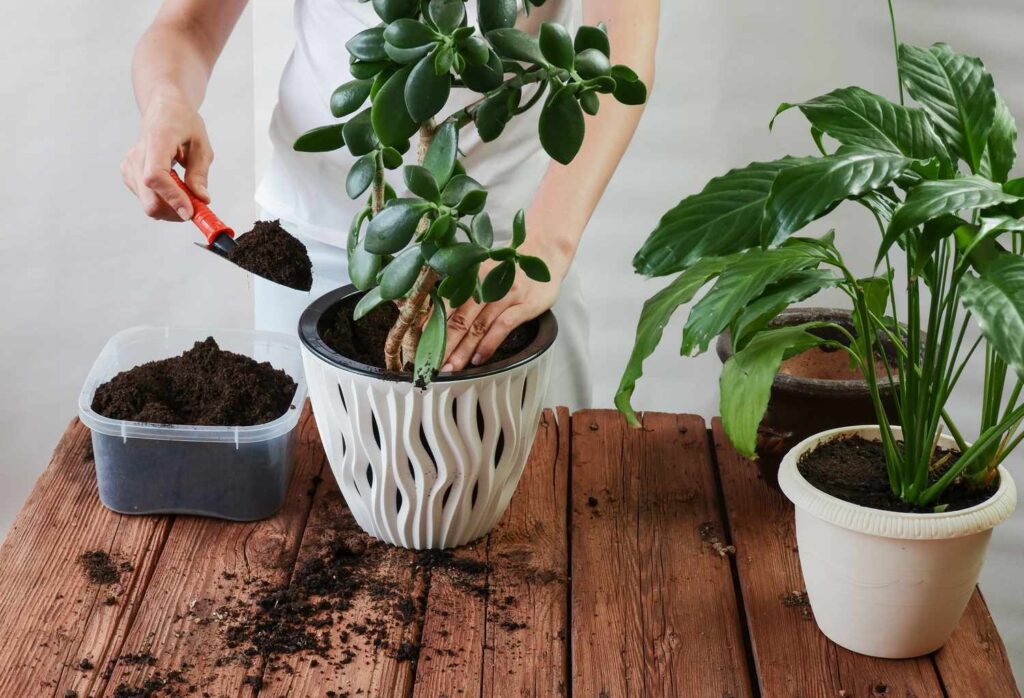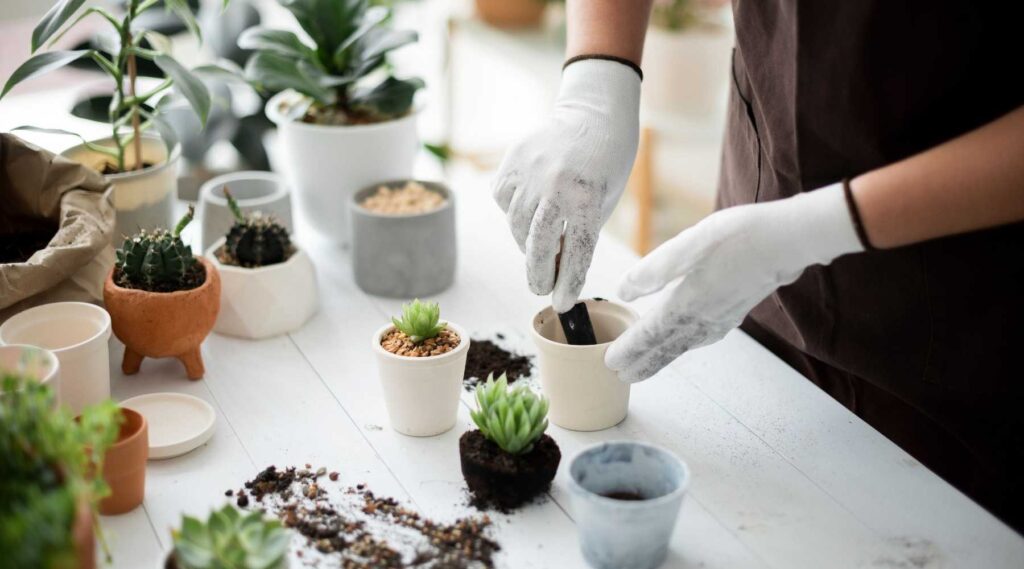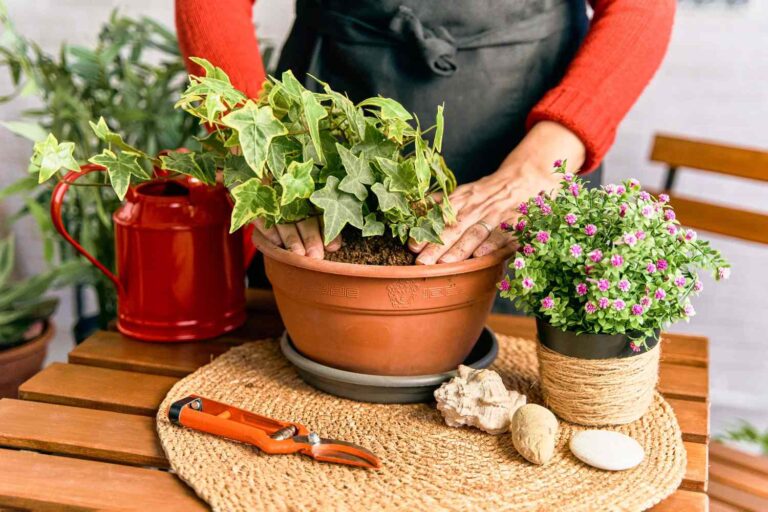Contents
Introduction
Ever wondered if your beloved houseplant is feeling a bit cramped? Just like us, plants need room to grow, and if they’re stuck in a pot that’s too small, they can get pretty stressed out. Repotting your plant might sound like a big task, but it’s actually pretty straightforward and super beneficial. It’s like moving your plant to a new, more spacious home where it can stretch out and thrive!
Repotting is crucial because it helps your plant avoid several common problems. When plants outgrow their pots, their roots get tangled and cramped, making it hard for them to absorb water and nutrients. This can lead to stunted growth, poor health, or even plant death if not addressed. By repotting, you’re giving your plant a fresh start with more room to grow, better soil, and improved drainage.
In this guide, we’ll walk you through how to spot the signs that your plant needs a new pot and how to repot it correctly. From identifying when it’s time for a change to choosing the right pot and soil, we’ve got you covered. You’ll learn how to give your plant a new lease on life with just a few simple steps. So grab your gardening gloves and let’s dive into the world of repotting! Your plant will thank you for it.
Signs Your Plant Needs Repotting
So, how do you know when it’s time to give your plant a new home? Plants can’t exactly tell us when they’re feeling cramped, but there are some pretty clear signs you can look out for. Catching these signs early can make a big difference in keeping your plant healthy and happy. Let’s break down what to watch for:

Root Overgrowth
One of the biggest clues that your plant needs repotting is root overgrowth. If you notice roots poking out of the drainage holes at the bottom of the pot, that’s a sure sign your plant is running out of space. Another telltale sign is when the plant becomes root-bound. This means the roots are so tangled and cramped that they start circling the pot, which can seriously stunt your plant’s growth and health.
Stunted Growth
If your plant seems to have hit a growth plateau, it might be time for a bigger pot. When a plant is stuck in a pot that’s too small, it can stop growing or grow very slowly. You might also notice that it’s not putting out any new shoots or leaves. This lack of new growth can be a sign that the plant’s roots are too crowded to support any more expansion.
Soil Degradation
Take a look at the soil in your plant’s pot. If it’s become compacted and hard, or if it’s not holding water properly, it might be time for a change. Compacted soil can prevent roots from getting the oxygen they need, while depleted nutrients mean your plant isn’t getting the essential elements it needs to thrive.

Water Drainage Issues
Watering problems can also hint that your plant needs repotting. If you notice that water is pooling on the surface of the soil rather than soaking in, or if the soil seems to stay soggy for too long, your plant might be struggling with poor drainage. This could be a sign that the roots are taking up too much space or that the soil is no longer doing its job.
Top-heavy or Unstable Plant
Has your plant started to look a bit wobbly in its pot? A top-heavy plant or one that frequently tips over can be an indicator that it needs a larger pot to provide more stability. If your plant is constantly leaning or falling over, it’s a sign that it might be outgrowing its current home.
By keeping an eye out for these signs, you’ll know when it’s time to repot your plant and give it the space it needs to flourish. It’s a simple process that can make a huge difference in your plant’s overall health and happiness.
How to Repot Your Plant
So, you’ve noticed that your plant needs a new pot—great! Repotting might sound like a daunting task, but with a little know-how, it’s a pretty straightforward process. Here’s a step-by-step guide to help you through it, making sure your plant transitions smoothly to its new home.
Choosing the Right Pot
First things first: picking out the right pot is crucial. You want to choose a pot that’s just a bit larger than the current one—about 1-2 inches wider in diameter. Going too big can be overwhelming for your plant and can lead to problems like waterlogged soil. Also, consider the material of the pot. Plastic pots are lightweight and retain moisture well, while clay pots are more breathable and can help with drainage. Pick the one that best fits your plant’s needs and your own style!
Preparing the New Pot
Before you move your plant, you’ll need to get the new pot ready. Start by adding a layer of drainage material, like gravel or small rocks, to the bottom of the pot. This helps ensure that excess water can drain away and prevents root rot. Next, choose a soil mix suitable for your plant. For most houseplants, a good-quality potting mix works wonders. If your plant has specific needs, like cacti or succulents, you might need a specialized mix.
Removing the Plant from Its Current Pot
Now comes the fun part: moving your plant! Gently loosen the soil around the edges of the pot. If the pot is plastic, you can often squeeze it to help the plant slide out. For more stubborn pots, you might need to tap the sides or use a tool to help loosen the soil. Be careful with the roots—handle them gently to avoid damage.
Repotting the Plant
Once your plant is out, place it in the new pot. Center the plant so it’s at the same depth as it was in the old pot—this helps avoid burying the plant too deep, which can affect its health. Fill in around the plant with fresh soil, gently pressing it down to eliminate air pockets. Water the plant thoroughly to help settle the soil and remove any remaining air pockets.
Post-Repotting Care
After repotting, your plant might need a little extra TLC. Adjust the light and temperature to help it acclimate to its new pot. Keep an eye out for any signs of stress, like wilting or yellowing leaves. It’s also a good idea to avoid fertilizing right after repotting—give your plant some time to settle in before you start feeding it again.
Repotting your plant doesn’t have to be intimidating. With these simple steps, you’ll be able to give your plant a fresh start in no time. Your plant will appreciate the extra space and care, and you’ll enjoy watching it thrive in its new home!
Common Mistakes to Avoid
Repotting is a great way to give your plant a new lease on life, but there are a few common pitfalls to watch out for. Avoiding these mistakes can make the process smoother and more beneficial for your plant. Let’s dive into what you should steer clear of:

Choosing an Overly Large Pot
It might be tempting to go for a much larger pot thinking it will give your plant tons of room to grow, but this can actually backfire. If the pot is too big, the excess soil can retain too much moisture, leading to root rot. Your plant’s roots will struggle to absorb water and nutrients efficiently, and you could end up with a plant that’s just as unhappy as it was before. Stick to a pot that’s only slightly larger than the current one to avoid this issue.
Not Adjusting Soil Type
Using the wrong type of soil can be a major problem. Different plants have different soil needs. For example, succulents and cacti need well-draining soil, while other houseplants might do best in a rich, moisture-retentive mix. If you don’t use the right soil type, your plant might not get the nutrients it needs or might suffer from poor drainage. Make sure to choose a soil mix that matches your plant’s specific needs.
Inadequate Drainage
Proper drainage is essential for healthy roots. If your new pot doesn’t have drainage holes, or if they’re blocked, you could end up with waterlogged soil. This can lead to root rot and other problems. Always ensure your pot has good drainage and consider adding some gravel or other drainage material to the bottom to help excess water escape.
By being mindful of these common mistakes, you’ll set your plant up for success in its new pot. Repotting doesn’t have to be tricky—just follow these tips and your plant will thank you with lush, healthy growth!
Conclusion
Repotting your plant might seem like a big task, but it’s actually a simple and rewarding process that can make a huge difference in your plant’s health. By paying attention to signs that your plant needs more space, such as root overgrowth or stunted growth, and following the steps to choose the right pot and soil, you’re helping your plant thrive in a fresh, new environment.
Remember, repotting isn’t just about giving your plant more room; it’s about setting it up for a healthier future. When you spot the signs and repot your plant correctly, you’re preventing problems like poor growth, nutrient deficiencies, and water issues. It’s all part of giving your plant the best care possible.
As you go through the process, keep in mind that your plant might need a little extra care to adjust to its new home. Adjusting light, temperature, and avoiding immediate fertilizing can help your plant settle in smoothly.
With these tips, you’re well-equipped to tackle repotting with confidence. Your plant will appreciate the new space and fresh soil, and you’ll enjoy seeing it flourish. So, roll up those sleeves, grab your gardening tools, and give your plant the upgrade it deserves. Happy repotting!



